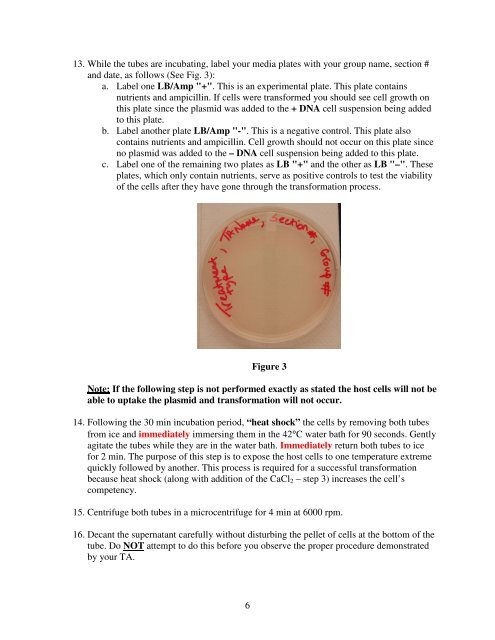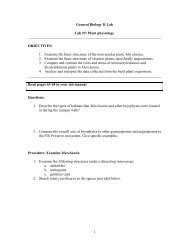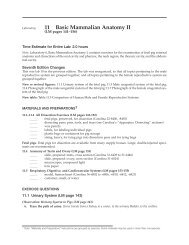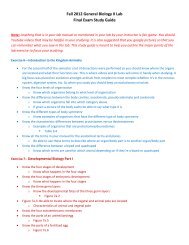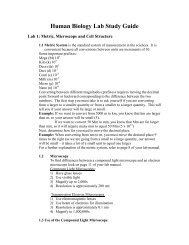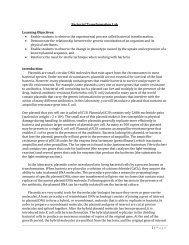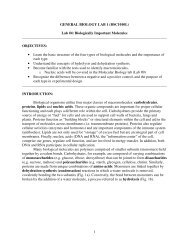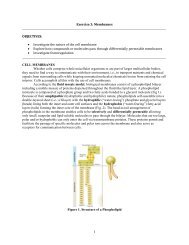1 GENERAL BIOLOGY LAB 1 (BSC1010L) Lab #10: Biotechnology ...
1 GENERAL BIOLOGY LAB 1 (BSC1010L) Lab #10: Biotechnology ...
1 GENERAL BIOLOGY LAB 1 (BSC1010L) Lab #10: Biotechnology ...
- No tags were found...
You also want an ePaper? Increase the reach of your titles
YUMPU automatically turns print PDFs into web optimized ePapers that Google loves.
13. While the tubes are incubating, label your media plates with your group name, section #and date, as follows (See Fig. 3):a. <strong>Lab</strong>el one LB/Amp "+". This is an experimental plate. This plate containsnutrients and ampicillin. If cells were transformed you should see cell growth onthis plate since the plasmid was added to the + DNA cell suspension being addedto this plate.b. <strong>Lab</strong>el another plate LB/Amp "-". This is a negative control. This plate alsocontains nutrients and ampicillin. Cell growth should not occur on this plate sinceno plasmid was added to the – DNA cell suspension being added to this plate.c. <strong>Lab</strong>el one of the remaining two plates as LB "+" and the other as LB "–". Theseplates, which only contain nutrients, serve as positive controls to test the viabilityof the cells after they have gone through the transformation process.Figure 3Note: If the following step is not performed exactly as stated the host cells will not beable to uptake the plasmid and transformation will not occur.14. Following the 30 min incubation period, “heat shock” the cells by removing both tubesfrom ice and immediately immersing them in the 42°C water bath for 90 seconds. Gentlyagitate the tubes while they are in the water bath. Immediately return both tubes to icefor 2 min. The purpose of this step is to expose the host cells to one temperature extremequickly followed by another. This process is required for a successful transformationbecause heat shock (along with addition of the CaCl 2 – step 3) increases the cell’scompetency.15. Centrifuge both tubes in a microcentrifuge for 4 min at 6000 rpm.16. Decant the supernatant carefully without disturbing the pellet of cells at the bottom of thetube. Do NOT attempt to do this before you observe the proper procedure demonstratedby your TA.6


